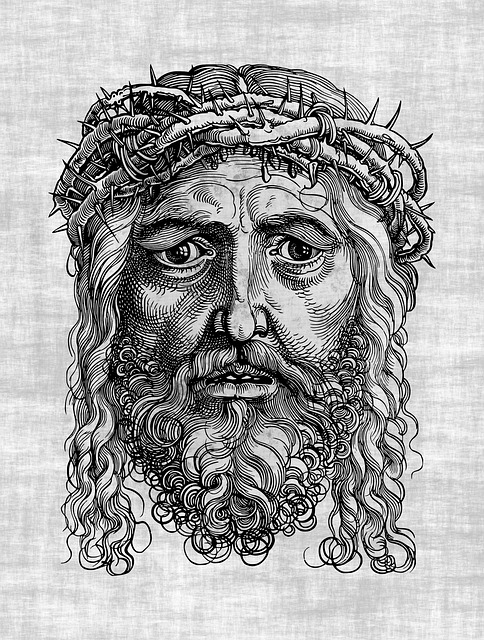 Submitted by Jesaru Dei on
Submitted by Jesaru Dei on

pixabay.com
For centuries Christians have celebrated Christ’s resurrection on Sunday as a response to the claim that He came back to life early that morning. But did He? Does the Bible really describe an Easter Sunday resurrection?
Christians in general accept that Good Friday is the day Jesus died, and Easter Sunday is the day He was raised from the dead. But does this square with the Bible?
If traditional Christianity is correct, Jesus was in the grave Friday night, the day part of Saturday, and Saturday night. That’s only one day and two nights. The way around this is to claim, as some do, that Jesus really meant only parts of three days. But if that were true, it would still give just three days and two nights.
When Jesus gave His answer to the religious leaders who demanded a sign, He emphatically stated the time period twice. He said, “As Jonah was three days and three nights in the belly of the great fish, so will the Son of Man be three days and three nights in the heart of the earth” (Matthew 12:40).
There’s an often overlooked biblical key which further underscores the accuracy of Jesus’ statement. In the week of His death there were two Sabbath days. Notice that the day Christ died was the preparation day. John’s Gospel says, “Because it was the Preparation Day, that the bodies should not remain on the cross on the Sabbath (for that Sabbath was a high day), the Jews asked Pilate that their legs might be broken, and that they might be taken away” (John 19:31).
The Jews didn’t want dead bodies on display on this special Sabbath, or high day. So in the latter part of the afternoon, they asked the Romans to hasten the end of crucifixion by breaking the victims’ legs with an iron club. But by this time Jesus was already dead. The Sabbath was about to begin at sunset as the 15th of the month of Nisan began. This annual high day was known as the First Day of Unleavened Bread. Some few days later there would also be the weekly Sabbath.
According to John’s Gospel it was after these Sabbaths that Mary Magdalene came to the tomb, well before sunrise on Sunday morning, only to find it empty. “Now on the first day of the week Mary Magdalene went to the tomb early, while it was still dark, and saw that the stone had been taken away from the tomb” (John 20:1). Matthew’s Gospel records that while it was still dark on Sunday morning, an angel declared that Jesus was already risen.
So let’s recount the biblical facts. Jesus was buried just before sunset on Nisan the 14th. The first night and day was Nisan the 15th, the special high day; the second night and day was Nisan the 16th; the third night and day was Nisan the 17th, the weekly Sabbath ending at sunset on Saturday. Counting back from the weekly Sabbath three days and three nights brings us to a crucifixion day of Wednesday.
Some Christian scholars have seen the importance of understanding these issues and have reconstructed Jesus’ final days from the biblical account rather than simply accepting tradition. Truth and tradition can be very different, of course.
Protestant minister R.A. Torrey was the successor to Dwight Moody at the Moody Bible Institute. In 1907 he wrote about the chronology of Jesus’ death and resurrection. He said: “To sum it all up, Jesus died about sunset on Wednesday. Seventy-two hours later, exactly three days and three nights, at the beginning of the first day of the week (Saturday at sunset), He arose again from the grave. When the women visited the tomb just before dawn the next morning, they found the grave already empty. . . . There is absolutely nothing in favor of Friday crucifixion, but everything in the Scripture is perfectly harmonized by Wednesday crucifixion” (Difficulties in the Bible, 1907, 1964).
Now, Torrey was not the only one to come to this conclusion. Anglican minister Leonard Pearson wrote: “The Bible nowhere says that Christ died on a Friday, but that He suffered as the true Passover and therefore on the 14th of the month Nisan. In the year of our Lord’s sacrifice the 14th of Nisan fell on a Wednesday [beginning the previous evening at sunset.] So we get the full period of three days and three nights. . . . In the Gospel story there is the mention of the Sabbath and this has been taken as the weekly Sabbath, whereas it is the Passover Sabbath [or the First Day of Unleavened Bread]. In other words, there are two Sabbaths in the Passover week” (Through the Land of Babylonia, 1939, 1951).
So there was no Good Friday and no Easter Sunday from a biblical point of view. How these traditions came about is no mystery, but neither are they the truth.
David Hulme
http://www.vision.org/vision-videos-the-resurrection-of-jesus-4814